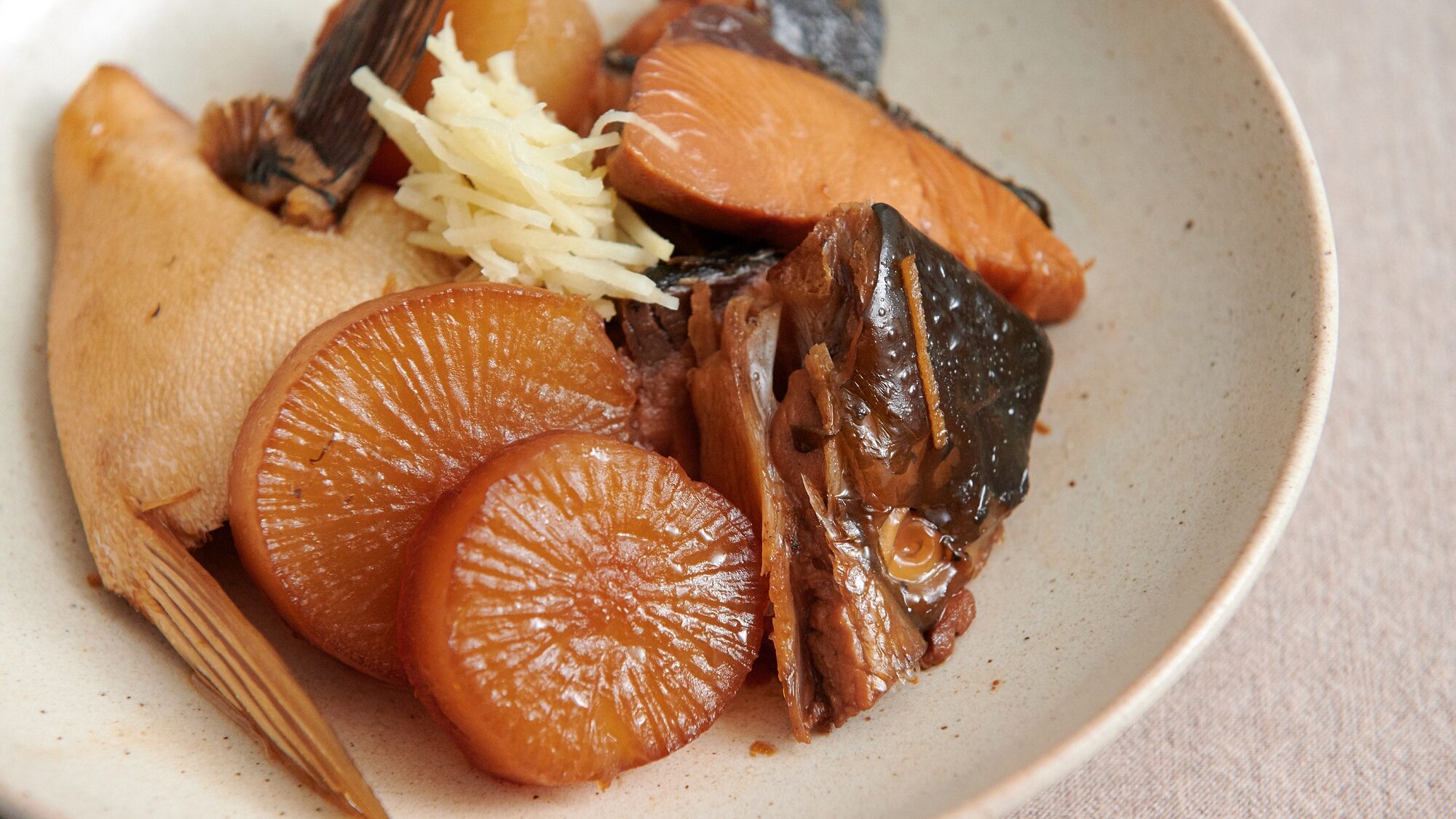
Hey there! So, Buri Daikon from Ishikawa is a real cozy dish. It’s basically Japanese amberjack (buri) simmered with daikon radish in a flavorful broth. Think tender fish that just melts in your mouth and daikon that’s soaked up all that yummy fish flavor. It’s a classic, especially in the colder months, and totally hits the spot. If you ever get a chance to try it, go for it!
Buri Daikon
- Region / Location: Ishikawa Prefecture
- Primary Area of Tradition: Entire prefecture
- Main Ingredients: Japanese amberjack (Buri), Daikon radish
How It’s Eaten / Served
Buri Daikon is typically made by briefly blanching chunks or fillets of Japanese amberjack (like the collar) to remove scales and any impurities. These are then simmered in a pot with daikon radish and kombu (kelp) for dashi. The dish is seasoned with sake, ginger, and sugar, and cooked with a drop lid until the flavors meld together beautifully. It’s often garnished with shredded ginger when served, adding a refreshing touch and vibrant color.
Cultural Background and Preservation
Japanese amberjack (Buri) is an indispensable part of Ishikawa’s culinary heritage. The winter fishing season for wild Buri in the Noto region’s inner bay kicks off around the time of early winter thunder, locally known as “buri okoshi.” While farmed Buri is common now, wild Buri is highly prized for its rich flavor and firm texture. Especially in the cold of winter, the fatty “kanburi” is so rich it can even repel soy sauce. This fish, which changes its name as it grows (a “shusseuo,” symbolizing advancement), is used in year-end celebrations and as a valuable gift. Historically, during the Edo period, freshly caught Buri was first presented to the lord of the domain, highlighting its status as a luxury item that commoners rarely tasted. Today, Buri is enjoyed in various dishes across Ishikawa, from the classic Buri Daikon and sashimi to “kaburazushi” (Buri挟み漬け) and fermented “maki-buri” (巻きぶり). Buri Daikon, a prime example of Buri cuisine, continues to be a beloved home-cooked meal, especially during its peak season from November to February, when markets are full of various sizes of Buri. It’s also an essential part of year-end festivities and gift-giving, with a tradition of the bride’s family sending it to the groom’s family. Local restaurants and izakayas also feature this dish. The Ishikawa Prefectural Fisheries Cooperative has branded “Natural Noto Kanburi” since 2006, setting strict criteria for certification, including being caught off the coast of Ishikawa between November and February and weighing over 7 kilograms.
Additional information:
- Dashi: A Japanese soup stock that forms the base for many dishes. It’s often made from kombu (kelp), bonito flakes (katsuobushi), dried sardines (niboshi), or shiitake mushrooms.
- Drop lid (otoshibuta): A smaller lid placed directly on the food inside the pot while simmering. It helps to distribute heat evenly and prevents the ingredients from moving around too much.
- Kombu: A type of edible kelp, essential for making dashi.
- Izakaya: A Japanese style of informal bar that serves alcoholic drinks and snacks. They often offer a variety of local dishes.
The information about regional cuisine featured on this website (Piggy's Grandma of Japan) is summarized and adapted from the Ministry of Agriculture, Forestry and Fisheries of Japan (MAFF) website, "Our Regional Cuisines"Additional commentary is provided based on the unique experiences and perspectives of the site's editors.
The copyright for the original content regarding regional cuisine belongs to the Ministry of Agriculture, Forestry and Fisheries of Japan.
The summaries and adaptations published on this site are intended for informational purposes only. Piggy's Grandma of Japan does not guarantee the accuracy or completeness of this information. For the most accurate and complete details, please refer to the original pages on the MAFF website.

